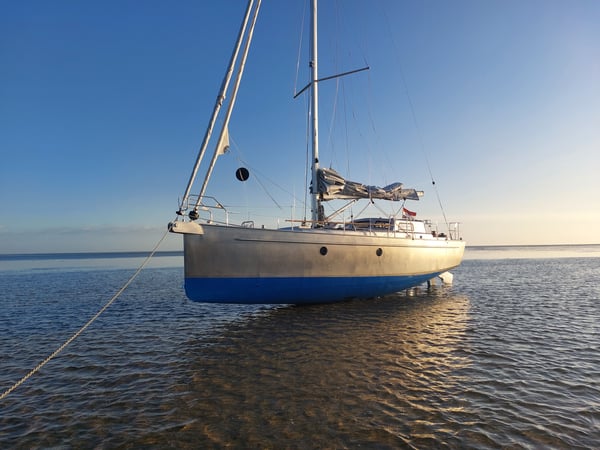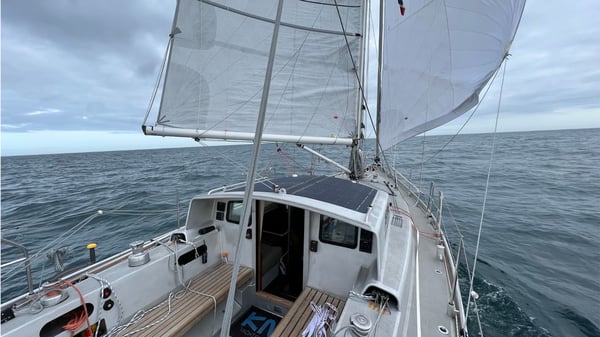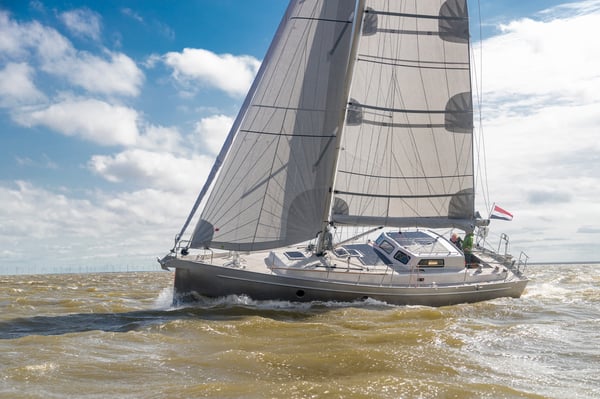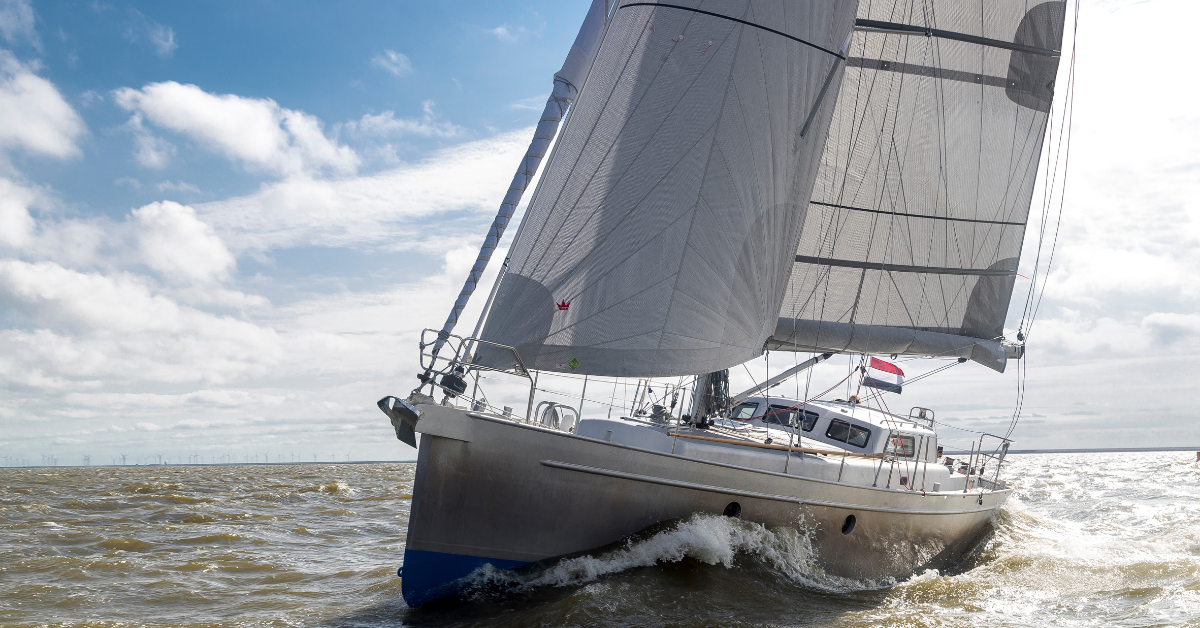Sustainable materials shaping the future of yacht building
Tough hulls from upcycled aluminium
Yacht builders embrace second-use metal
With the early growth of the circular economy, more recycled materials become available. Metals like steel and iron have been recycled ever since they were first used and with the increased focus on sustainable production, ever more volumes of the second-use metals are available. Recycled aluminium is embraced by yards that build yachts from this metal alloy.
French yards like Garcia, building long range cruising monohull sailing yachts and also Dutch yards like catamaran yard Vaan, that dedicates to building their yachts as sustainable as possible since their start in 2019, are only some examples of yards that build exclusively in aluminium.
In the Dutch town of Makkum, a cluster of yards that build aluminium yachts are grouped along the same canal, that connects them to the large inland water of the IJsselmeer. These are the yard of the Brothers Enkhuizen, Hutting Yachts, Bloemsma and K&M Yachtbuilders (KMY). They all use recycled aluminium. KMY actively searches for the materials and it’s origin in their quest for sustainable construction. Designer and project manager Jelle Engel at KMY shares the story of the research that preceded the creation of the most sustainable yacht the yard could envision: the Bestevaer 36.
Designers’ own desire
Famed yacht designer Gerard Dijkstra designed the ideal yacht for himself. His background in yacht racing, his desire to continue exploring polar regions by sailing yacht, his love for drying out with the yacht in the tidal waters of the Waddenzee all manifest in the original first yacht in the series of ‘Bestevaer’ yachts, that have since 2003 been built at KMY.
This has evolved into a series of aluminium yachts ranging from 42 to 76 feet in length. Bestevaers are exploration sailing yachts. The latest addition to the fleet is the 36 footer that won the 2024 European Yacht of the Year Award. The yacht is the result a combined effort of the designer and the yard to build a yacht as sustainable as possible.

Bestevaer 36 dried out: The yacht has a retractable keel allowing to dry out in tidal waters.
Upcycled collection
“We started to make an inventory of sustainable materials that we could use to replace the standard materials that are being used in yacht building,” Engel explains. “This was the first research work for the Bestevaer 36, but the collection of materials that help to make a yacht more sustainable is still growing, even after the first yacht of this design has been sailing for a year now and the second is under construction.”
Economic choice
“For the core building material of Aluminium, it is now achievable to have an alloy of marine grade aluminium with a recycled content of about 70 per cent. Not all thicknesses of aluminium plates are available recycled. For the stronger constructive parts of the hull, we need plate thickness of more than 8 millimetre. Those sheets of alloy are not available yet. We have a good working relationship with the German supplier Speira, a rolling and recycing manufacturer of aluminium. Most of their recycled material comes from packaging material.
First they press all of the thin layers from the packaging together and then melt them to become new material, just as good as first time produced. We need to understand that when they produce a batch, it is with multiple tons of material. They size their end products to the greater demands of the companies that use their alloy of recycled metal added with a percentage of new ore. Yacht building is not the biggest section of the industry to use the second-use aluminium. In our investigation, it became clear that the extra cost of recycled aluminium as opposed to virgin material is so close enough to justify the use of it, also in term of our economic business model.”
Bare metal
The yacht’s hulll is not painted, nor is the deck. “We believe that not using paint saves a lot of chemical products with harmful production methods. It also saves a lot of plastering, of which a large percentage is then sanded away to create a smooth surface under the paint.

Bestevaer 36 cockpit: The cockpit of the Bestevaer 36 with hardened pinewood benches and unpainted rugged antislip deck.
Endless recycling
Production of aluminium from ore mining to sheets of metal that can be used to build yachts is very energy demanding. Yet, melting used aluminium to produce new sheets of metal is easier and requires less energy than recycling steel.
With enough scrap aluminium available, recycling is the obvious choice to dramatically reduce the environmental impact of yacht building. The IAI (International Aluminium Industry) has the numbers: “Aluminium is one of the most recycled materials on earth. Almost 75 per cent of the 1.5 billion tonnes of Aluminium ever produced is still in use today. And every year, more than 30 million tonnes of aluminium scrap is recycled globally.
“Yards that build aluminium yachts have shifted to using recycled metal. That is, they use material that consists of a mixture of virgin and recycled aluminium. Producers have not yet been able to create an alloy that has the desired qualities for use in a marine environment (marine grade aluminium) that consists of only recycled materials. At KMY, a trial sheet consisting of 92 percent recycled material has arrived for first application. The metal alloy has been approved by Lloyds Register as certified marine grade aluminium.

Bestevaer 36 004: The aluminum Bestevaer 36 – like most yachts from the yard – is not painted.
In a series of articles about the use of sustainable materials for yacht building, this one focusses on recycled aluminium. Articles on other materials we published before:
https://www.metstrade.com/news/sustainability/renewable-resources-enhance-green-yachting
https://www.metstrade.com/news/sustainability/bio-based-and-recyclable-materials-prove-themselves
https://www.metstrade.com/news/sustainability/fibre-innovation-for-sustainable-composite

